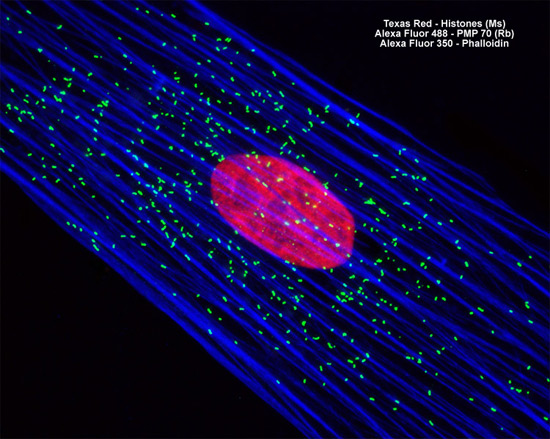The Indian Muntjac deer skin cell line is a popular fibroblast line commonly used in research laboratories worldwide, especially for chromosome studies. Muntjacs are members of the family Cervidae often referred to as barking deer because of the characteristic sound they emit when they feel threatened or alarmed.
Indian Muntjac Deer Skin Fibroblast Cells

Histone proteins were targeted in the culture of Indian muntjac deer skin cells presented above with mouse anti-histone (pan) monoclonal antibodies, which were imaged with goat anti-mouse Fab fragments conjugated to Texas Red (labeling the nucleus). The specimen was simultaneously labeled for peroxisomes with Alexa Fluor 488 (green emission) conjugated to goat secondary antibodies that target rabbit anti-PMP 70 (peroxisomal membrane protein 70). Alexa Fluor 350 (blue emission) conjugated to phalloidin was employed to counterstain the cytoskeletal F-actin network. Images were recorded in grayscale with a Hamamatsu ORCA AG camera system coupled to a ZEISS Axio Imager microscope equipped with bandpass emission fluorescence filter optical blocks provided by Chroma and Semrock. During the processing stage, individual image channels were pseudocolored with RGB values corresponding to each of the fluorophore emission spectral profiles.



